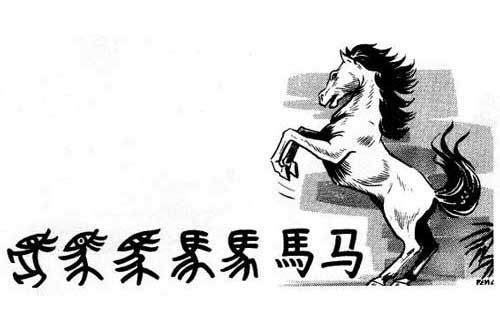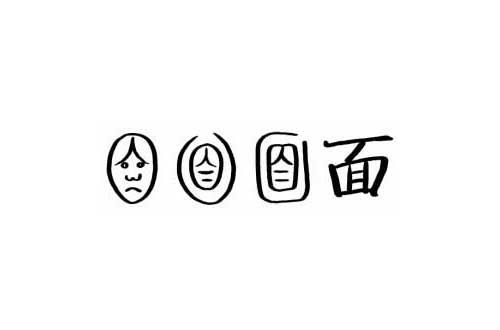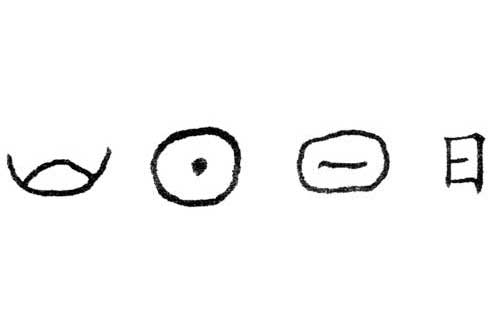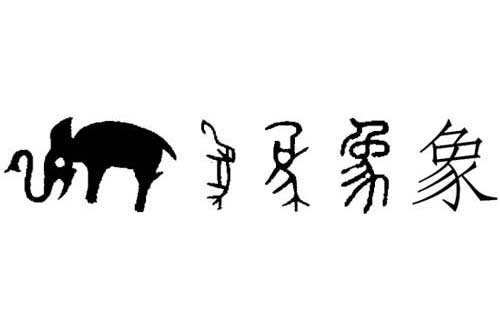Chinese characters are one of the earliest forms of written language in the world, dating back approximately five thousand years.
Origin
In ancient times there was a very popular myth named “Cang Jie’s Invention of Characters”. According to this myth, Cang Jie, a historical chronicler of the Yellow Emperor over 5,000 years ago, was inspired by the footprints of animals and understood that different prints could be treated as marks to discriminate different objects, so he invented a lot of symbols to represent different objects and affairs, and they were the oldest Chinese characters.
During the Late Neolithic period, at the latter half of the 3rd millenum BC, many symbols or “pictograms” started to be incised on pottery and jades. While these pictograms are not truly Chinese characters, they do bear some resemblance to the earliest Chinese characters.




Evolution of Chinese Characters
Chinese characters have evolved over several thousands of years to include many different styles, or scripts. Each of these have their own special characteristics, and are derived from different origins dating back to different dynasties.
Jiaguwen (甲骨文), or Oracle Bone Script. This is the earliest form of Chinese writing, used from the Middle to Late Shang dynasty (approximately 1500 BC to 1000 BC). This script was etched onto turtle shells and animals bones, which were then used for divination in the royal Shang court, hence the name “oracle bones”. The shape of these characters are often described as “pictographic”, in that they resemble stylized drawings of objects they represent.
Seal Characters (篆书 zhuan shu /jwann shoo/)
This style gets its name from the ancient for of characters used in official seals. Seal characters are very popular with calligraphy artists for their elegant style and are divided up into both big seal and small seal characters.
Dazhuan (大篆), or Greater Seal. This stage of Chinese writing flourished from the Late Shang to the Western Chou dynasties (1100 BC to 700 BC). Unlike Jiaguwen, which was carved on bones, Dazhuan mainly appeared on cast bronze vessels.
Xiaozhuan (小篆), or Lesser Seal. This elegant script is the direct parent of the modern, unsimplified Chinese script. They go back to the Qin Dynasty (221 – 206 BC) and are more simple and standard than big seal.
Official Script (隶书 li shu /lee shoo/)
As its name implies, this script was used by government bureaucrats. Although it has a neat look, it is a more complex type of writing with its different variations. Li shu became the writing which eventually transitioned into formal script. Evolution of Chinese writing after Lishu is a trend of increasingly cursive scripts. These scripts are used primarily in calligraphy.
Formal Script (楷书 kai shu /keye shoo/)
Kai Shu is known for its squareness, and horizontally and vertically standardized structure. Its simplicity makes it a neat and orderly way of writing, which is possibly why it is also very popular with calligraphers.It is very similar to Lishu, but slightly more cursive and contains serif-like (hook or anchor-like) elements at the corners and end of strokes. Kaishu appeared toward the end of the Han dynasty (220 CE).
Running Script (行书 xing shu /sshing shoo/)
Xing shu is the cursive form of kai shu, often several strokes are merged into one, especially sequential dots or two strokes perpendicular to each other. It also appeared shortly after the Han dynasty.
Cursive Script (草书 cao shu/tsaoww shoo/)
Another cursive form of calligraphy, cao shu also goes back to the Han Dynasty. Cursive script is very simple, irregular and sketchy, yet highly artistic. The shape of its characters often do not resemble the corresponding Lishu or Kaishu character, in that some strokes are merged into one and others are simply left out.
The most important change in Chinese writing since the standardization in the Qin dynasty occurred in the middle of the 20th century. In 1949, the People’s Republic of China (PRC) introduced simplified characters to replace the traditional Kaishu characters. Not all characters were given a new simplified form, as these unsimplified characters were already very “simple” and involve very few strokes. Some simplified characters were in fact official recognition of widely-used colloquial variants of traditional characters.
However, other Chinese-speaking places such as Taiwan and Hong Kong continued to use the traditional script.
Influence
As the only indigenous and the oldest writing system in East Asia, the Chinese writing system became the inspiration and the basis for many other East Asian writing systems, some prominent and still in use, while other having faded into obscurity and disuse. Some of the examples are: Japanese, Korean, Jurchen, and Vietnamese Chu Nom.

